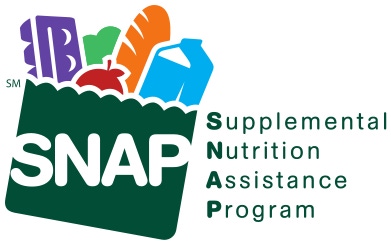Analytics Fights Fraud In Government Benefits ProgramsAnalytics Fights Fraud In Government Benefits Programs
Right combination of data analytics can help agencies weed out identity thieves and fraudsters.

As a nation, we are seeing more and more headlines like this one from The Washington Post: "Agencies Can't Always Tell Who's Dead and Who's Not, So Benefit Checks Keep Coming."
Fraud is all around us, and government benefits programs are particularly vulnerable. Programs like the Supplemental Nutrition Assistance Program (SNAP) and Social Security provide vital assistance to citizens in need, but, unfortunately, qualified recipients aren't the only ones cashing in on benefits.
Every year public benefits programs lose billions of dollars to fraud, siphoning money away from legitimate recipients and increasing the burden on already-tight government budgets and weary taxpayers.
Though the threat of fraud is nothing new, advanced technology continues to change the game. When benefits were disbursed in check form, forgery and counterfeiting were the main concerns. Today, as agencies have moved from paper checks to electronic benefit transfer and debit cards, fraud threats have become more sophisticated, leading to a vast array of challenges.
[Analytics in a grain elevator? See GE Powers Internet Of Agriculture.]
So far, no one has found a way to stop fraud completely in government benefits programs, but agencies can reduce it through early detection and deflection. One low-level solution to tackle fraud is automating clerical tasks so investigators can spend more value-added time researching and uncovering fraud, which results in tangible benefits to state coffers.
For example, we at Xerox worked with one mid-Atlantic state to develop an enhancement to our EBT Intelligent Analytics Platform that collects transaction data for subpoena fulfillment. Instead of requiring employees to spend hours pulling and consolidating transaction data to assemble a large and complex document to respond to a subpoena, they can produce a courtroom-ready document in minutes. This state reduced its cycle-process time by approximately 90% per subpoena. GIS data mapping and visualization can also significantly reduce investigative time. Using a geographic display instead of combing through reams of reports can help a state employee identify suspicious or concerning situations quickly and efficiently.
Another key focus area for states is strengthening identity validation at the point of enrollment into a benefits program. Identity fraud occurs in the United States every three seconds. Improving validation is the first and most critical opportunity to thwart synthetic and real identity fraud. The rise of social media has made it easier for criminals to obtain proprietary information, and phishing scams lure people into divulging personal data, passwords, and Social Security numbers to what they believe is a legitimate agency or familiar organization. More importantly, big data management tools have not gone unnoticed by criminals, who leverage vast amounts of widely available personal information for nefarious purposes. Because of this, we need to find the best mechanism for spotting fakes before they make it into the system. This can be done using sophisticated authentication and validation tools.
Knowledge-based authorization (KBA) tools aggregate data to prompt compliant, non-credit-based, "out of wallet" questions to more accurately verify identity. Many organizations are moving away from questions like "What's your mother's maiden name?" that can be easily answered with a Google search or stolen credentials. Instead, these "out of wallet" questions are specific inquiries that typically can only be answered by the real person. For example: "Who was your second grade teacher?" or "What color car did you drive in 2005?" KBA also occasionally throws in a question that should elicit a "none of the above" answer to prove identity and further weed out criminals.
As fraud increases, we recommend that agencies collaborate and share data with other states. This casts a wide net on fraud and identifies instances in which multiple state programs may have paid the same recipient during the same period of time. Such an extended use of analytics has already paid off for states in a recent pilot program, pinpointing a number of discrepancies and preventing thousands in lost funds.
Further, states should share known fraud data with non-governmental organizations, like credit or debit card issuers, that may support their benefits programs. Imposters who are committing identity theft in benefits programs are likely the same people obtaining fraudulent credit cards. If we can remove the political and organizational obstacles and share known fraud data across agencies, states, or regions, we can improve processes and reduce opportunities for criminals to exploit government money.
Fraud, waste, and abuse schemes are constantly changing. As fast as an agency blocks today's common culprits, new scams are already in progress. Fighting fraud is a continuum that requires the fluidity, expertise, and technology to anticipate and protect against tomorrow's challenges. The key to protecting benefits funds from fraud without alienating recipients is to remain vigilant and invest in the right combination of data analytics, fraud prevention tools, and expertise required to deflect these ever-evolving threats.
Sophisticated attacks demand real-time risk management and continuous monitoring. Here's how federal agencies are meeting that challenge. Get the new Flexibility Equals Strength issue of information Government Tech Digest today. (Free registration required.)
Read more about:
2014About the Author
You May Also Like






